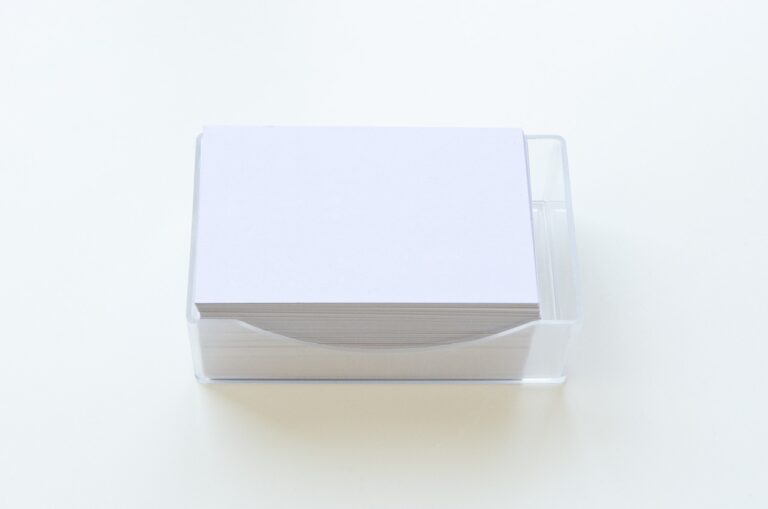Exploring the Role of Emotional Design in Remote Care Devices
betbhai com whatsapp number, playexch, lotus365 in login password:Exploring the Role of Emotional Design in Remote Care Devices
In recent years, there has been a significant increase in the use of remote care devices for monitoring and managing patients’ health outside of traditional healthcare settings. These devices, ranging from wearable fitness trackers to sophisticated medical monitoring tools, play a crucial role in enabling individuals to take control of their health and well-being. However, one aspect that is often overlooked in the design of these devices is emotional design.
Emotional design refers to the process of designing products with the user’s emotions and feelings in mind. It involves creating products that not only function well but also evoke positive emotions and create meaningful experiences for the users. In the context of remote care devices, emotional design can play a critical role in enhancing user engagement, improving user satisfaction, and ultimately, driving better health outcomes.
In this article, we will explore the role of emotional design in remote care devices and discuss how designers can leverage emotional design principles to create more effective and user-friendly healthcare solutions.
Understanding Emotional Design in Remote Care Devices
Remote care devices are often used by individuals who are dealing with chronic conditions or who require ongoing monitoring of their health status. In such cases, the user’s emotional state plays a significant role in their ability to effectively manage their health and adhere to treatment recommendations.
By incorporating emotional design principles into the design of remote care devices, designers can create products that not only provide accurate health data but also support users’ emotional well-being. This can be achieved through the use of engaging interfaces, personalized feedback, and motivational elements that help users stay engaged and motivated to take care of their health.
The Role of Empathy in Emotional Design
Empathy is a fundamental aspect of emotional design. Designers need to put themselves in the shoes of the users and understand their needs, challenges, and emotions. By cultivating empathy for the users, designers can create products that are more intuitive, intuitive, and user-friendly.
In the context of remote care devices, empathy plays a crucial role in designing products that are not only functional but also emotionally resonant. For example, by understanding the emotions that users may experience when managing a chronic condition, designers can create interfaces that are empathetic, supportive, and reassuring.
Personalization and Emotional Design
Personalization is another key aspect of emotional design in remote care devices. By personalizing the user experience based on individual needs, preferences, and goals, designers can create products that are more engaging and effective.
For example, a remote care device that provides personalized health recommendations based on the user’s specific health data can help users feel more connected to their health goals and motivated to make positive changes. Similarly, a device that uses gamification elements to incentivize healthy behaviors can make the experience of managing health more enjoyable and rewarding.
Creating Emotional Connections through Design
One of the primary goals of emotional design in remote care devices is to create emotional connections between the users and the products. By designing products that evoke positive emotions such as joy, satisfaction, and confidence, designers can foster a sense of trust and engagement that motivates users to continue using the devices.
This can be achieved through the use of intuitive interfaces, visually appealing designs, and interactive elements that make the user experience more enjoyable and rewarding. By creating products that users genuinely enjoy using, designers can increase user engagement and improve the effectiveness of remote care devices.
Incorporating Emotional Design in Remote Care Devices
So, how can designers incorporate emotional design principles in the development of remote care devices? Here are a few key strategies:
1. Understand the user’s emotional needs and motivations: Conduct user research to understand the emotional challenges and motivations that users may have when managing their health. By gaining insights into these emotional factors, designers can create products that address users’ emotional needs effectively.
2. Design for empathy: Create interfaces that are empathetic, supportive, and easy to use. Consider how the design elements, such as color schemes, typography, and visual cues, can evoke positive emotions and create a sense of connection with the users.
3. Personalize the user experience: Use personalized feedback, recommendations, and notifications to tailor the user experience to each individual’s needs and preferences. By providing users with personalized information and support, designers can increase user engagement and motivation.
4. Use gamification elements: Incorporate gamification elements such as challenges, rewards, and achievements to make the user experience more engaging and motivating. By turning health management into a game-like experience, designers can increase user participation and adherence to treatment recommendations.
5. Test and iterate: Continuously test the design of remote care devices with real users to gather feedback and insights. Use this feedback to iterate on the design and make improvements that address users’ emotional needs and preferences.
By incorporating these strategies into the design process, designers can create remote care devices that not only provide valuable health data but also support users’ emotional well-being and help them achieve their health goals.
Final Thoughts
Emotional design plays a crucial role in the development of remote care devices. By creating products that are not only functional but also emotionally resonant, designers can enhance user engagement, improve user satisfaction, and drive better health outcomes. By understanding the user’s emotional needs and motivations, designing for empathy, personalizing the user experience, using gamification elements, and testing and iterating on the design, designers can create remote care devices that truly make a difference in users’ lives.
FAQs
Q: What are some examples of remote care devices that incorporate emotional design?
A: Some examples of remote care devices that incorporate emotional design include wearable fitness trackers that provide personalized feedback and motivation, medical monitoring tools with intuitive interfaces that are easy to use, and mobile apps that use gamification elements to incentivize healthy behaviors.
Q: How can emotional design improve user engagement with remote care devices?
A: Emotional design can improve user engagement with remote care devices by creating products that evoke positive emotions, such as joy, satisfaction, and confidence. By designing products that users genuinely enjoy using, designers can increase user engagement and motivation to take care of their health.
Q: What are some challenges in incorporating emotional design into remote care devices?
A: Some challenges in incorporating emotional design into remote care devices include balancing functional requirements with emotional design elements, addressing diverse user needs and preferences, and ensuring that the design is inclusive and accessible to all users.
Q: What are some future trends in emotional design for remote care devices?
A: Some future trends in emotional design for remote care devices include the use of artificial intelligence and machine learning to personalize the user experience, the integration of virtual reality and augmented reality technologies to create immersive user experiences, and the development of wearable devices that can adapt to the user’s emotional state.
Q: How can healthcare providers leverage emotional design in remote care devices to improve patient outcomes?
A: Healthcare providers can leverage emotional design in remote care devices to improve patient outcomes by recommending and endorsing products that are user-friendly, engaging, and supportive of users’ emotional well-being. By partnering with designers and technology companies that prioritize emotional design, healthcare providers can enhance patient engagement and adherence to treatment recommendations.





